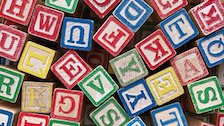Or search by topic
Number and algebra
Geometry and measure
Probability and statistics
Working mathematically
Advanced mathematics
For younger learners
Proof Through Words - Number
 In this feature for Primary teachers, we offer a selection of numerical tasks that lend themselves to 'proof through words'. In the accompanying article, we outline three essential features of proof and illustrate what they might look like in the context of words, as opposed
to algebraic symbols. The tasks we have included in this feature will help develop your learners' understanding of what constitutes a proof, so that they are well equipped on the mathematical journeys ahead.
In this feature for Primary teachers, we offer a selection of numerical tasks that lend themselves to 'proof through words'. In the accompanying article, we outline three essential features of proof and illustrate what they might look like in the context of words, as opposed
to algebraic symbols. The tasks we have included in this feature will help develop your learners' understanding of what constitutes a proof, so that they are well equipped on the mathematical journeys ahead.
You can watch a recording of the webinar in which we discussed the mathematical thinking which can be prompted by these activities.
You may also like to take a look at our Proof Through Words - Geometry feature which offers similar experiences but in a numerical context.
Why Dialogue Matters in Primary Proof
Next-door Numbers



Two Numbers Under the Microscope



Even and Odd



Strike it Out



Take Three Numbers



An Easy Way to Multiply by 10?



Unravelling Sequences



Mathdoku



Three Neighbours



Neighbourly Addition




